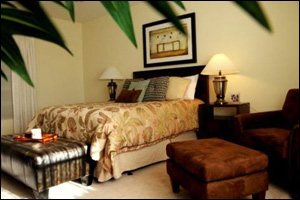 As the number of older Americans balloons, so too does the proportion of the population they comprise. According to the 2010 US Census, over 40 million Americans – 13% – are 65 or older. In comparison with 2000 data, “the population grew at a faster rate in the older ages than in the younger ages.”
As the number of older Americans balloons, so too does the proportion of the population they comprise. According to the 2010 US Census, over 40 million Americans – 13% – are 65 or older. In comparison with 2000 data, “the population grew at a faster rate in the older ages than in the younger ages.”
This trend is expected to continue and accelerate. As a result, issues surrounding the care of the elderly will become increasingly important.
Many aspects of dealing with aging, such as the need for assisted living facilities, have a social stigma attached. This need not be the case. With a change in perspective on aging and caring for the elderly, people can realize that assisted living can be enhanced living.
Defining Assisted Living
Assisted living generally refers to any long-term facility for elderly people who still have their mobility but who may need or want assistance with the tasks of daily living such as bathing or preparing meals. In these facilities, independence for residents is actively encouraged, but support is there when it’s needed. Assisted living is a middle ground between the complete independence of living on one’s own and the full dependence of living in a nursing home.
The Stigma
In a culture where the emphasis is on youth, and new products are continuously being developed to help people feel and look younger, aging is widely viewed as a negative process. This perception of aging is at the root of the stigma associated with assisted living.
The stigma comes from both sides of the equation. The elderly often feel badly about moving to assisted living because it involves needing help. Independence is high valued, so admitting to needing help is often perceived as weakness. For some senior citizens, this causes low self-esteem and depression.
On the other side, adult children often feel guilty about choosing this care alternative because there is a perception that this equals abandonment and abdicating their responsibilities. Both perceptions need to change.
The Need for Assistance
Needing assistance should not be perceived as weakness. The aging process is natural; there’s no need to be ashamed of it. Accepting the help provided by an assisted living facility can remove the physical strain and emotional burden of some daily tasks, allowing seniors to focus more attention and energy on the tasks they can still do independently. It also removes the risk of injury to seniors who try to complete tasks they are no longer able to do easily. That reduced risk is a significant benefit to seniors’ physical and mental health, which are crucial to quality of life.
Family Guilt
Many families feel guilty about placing loved ones in an assisted living facility, but that guilt is unnecessary. Understanding that such facilities lift physical burdens and reduce injury risks can help family members realize that their loved ones are well cared for by staff with the proper training. Understanding other benefits of assisted living can also relieve this guilt.
Social Interaction
If seniors remain in their own homes as they age and need more help, they may become increasingly isolated. As they are able to do less and less, their social networks shrink, sometimes so much that their only contact is with caregivers. Assisted living diminishes social isolation because seniors are together in one place where they can socialize with a community of others.
Many facilities also provide activity programming to increase social interaction. The health benefits of strong social networks are well known. A 2010 study by Brigham Young University and the University of North Carolina at Chapel Hill, for example, showed that people with poor social connection “had on average 50% higher odds of death… than people with more robust social ties.” Assisted living allows elderly adults to take advantage of these health benefits and to increase their longevity.
The Value of Variety
Boredom is a source of depression in older adults. This too can be mitigated by life in assisted living. The social interaction and availability of planned activities that seniors can access help alleviate the boredom of living alone or with loved ones where no such activities exist. This variety also provides mental stimulation, another important aspect of quality of life.
A study published in 2003 by the Albert Einstein College of Medicine in New York, which followed 450 people over 75 for two decades, shows that mental stimulation helped seniors reduce their risk of dementia by up to 75%. That being the case, the panorama of activities available in assisted living communities can only benefit seniors’ mental health as well as their physical health.
Enhanced Living
Assisted living facilities provide a range of physical, mental and emotional benefits for seniors. Removing physical strains, providing social networks and offering valuable mental stimulation are all major benefits of this lifestyle. Understanding those benefits can help the elderly and their families remove the stigma associated with assisted living and see how it can, in fact, be enhanced living.
About the author: This article was provided by Palm Court, a high quality assisted living facility in Los Angles. Palm Court’s goal is to enable its patrons to maintain a healthy, fun-filled lifestyle with laughter, friendship, and stimulating activities. Visit their website today.